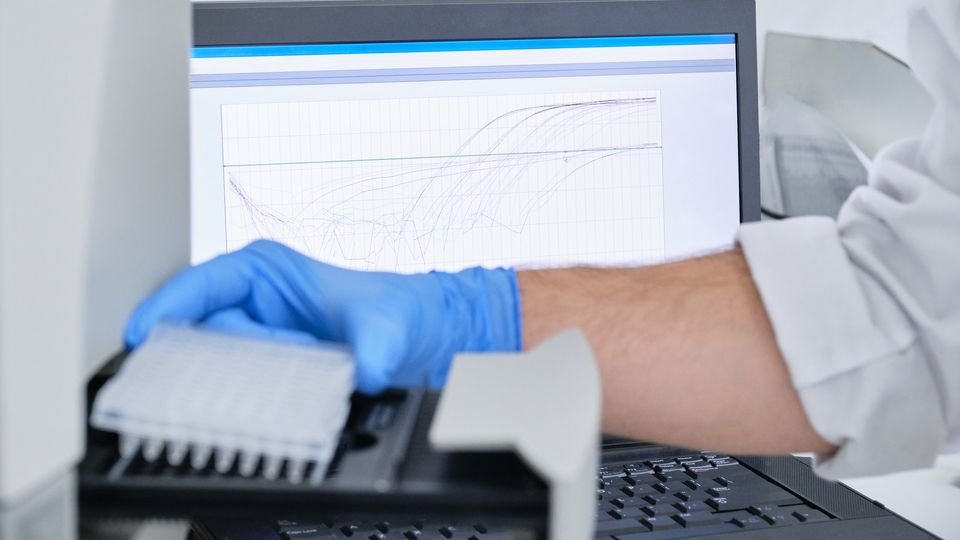Nucleic acids are large biomolecules that encode genomic information in all cells. DNA and RNA are the two key nucleic acids. While DNA constitutes the genetic material in most cells, RNA encodes genetic information in certain viruses. DNA is responsible for transmitting genetic information from one generation to the next, while RNA plays a crucial role in protein synthesis. Apart from this, nucleic acids are used for gene regulation and as therapies for complex genetic disorders. Nucleic acid detection plays a crucial role in diagnosing and treating diseases. Compared to a protein analysis, nucleic acid analysis offers deeper insights and accurate information since the gene expression of an organism is often more stable than its protein expression. Thus, nucleic acid analysis is compelling to academic research and drug development.
qPCR assay
Analysis of a nucleic acid involves the determination of its base sequences. However, since the nucleic acid concentration in most analytical samples is low, it needs to be amplified. Polymerase chain reaction (PCR) is a technique that allows the amplification of base sequences using specific primers. The qualitative PCR (qPCR) technique integrates the amplification of nucleic acid sequences via PCR and quantifies the nucleic acid present in a PCR cycle. In addition, qPCR assay is an invaluable tool in gene expression analysis and helps quantify mRNA present in the sample.
The qPCR technique is considered the gold standard technique in quantifying the nucleic acids in a sample. The protocol is simple, and the qPCR service is cost-effective. Although a researcher needs prior information on the nucleic acid sequence for amplification, the qPCR assay displays high specificity. It has multiple advantages, such as high reproducibility and robustness. Interestingly, the qPCR analysis has helped to overcome the challenges associated with traditional cellular assays, such as the cell-based NAB assays that require extensive validation and are subject to matrix influence.
Other Nuclei Acid Detection Methods
Other alternative techniques to qPCR include RNA sequencing and microarrays. The DNA microarrays, also known as DNA chips, comprise tiny slots on the microchip that enable researchers to examine the gene expression levels of multiple genes. This method is reliable, robust, and affordable. Gradually, microarrays are being replaced by nucleic acid sequencing techniques. Currently, microarrays are used for whole transcriptome deferentially expressed gene analysis, especially when the gene of interest is unknown.
Must Read: Step-by-Step Guide to Performing a Cell Viability Assay
RNA sequencing can analyze differential expression genes with a broader dynamic range than microarrays. This technique can analyze DNA variations such as single nucleotide polymorphism, insertions, and deletions. Unlike PCR techniques, RNA sequencing does not require predesigned probes; thus, the experimental protocol is unbiased. Compared to qPCR, RNA sequencing is a powerful technique that drives the detection of novel transcripts. However, the method is still more expensive and complex than qPCR.
Conclusion
With advancements in science and technology over the past few decades, the sensitivity, reproducibility, and cost-effectiveness of qPCR techniques have increased. Simultaneously, other PCR techniques, such as digital PCR and droplet digital PCR (ddPCR assay), and non-PCR-based techniques, such as microarray and RNA-sequencing, have developed, having their advantages and limitations. While RNA sequencing might be a better technique for discovering novel transcripts, it is also an expensive technique. Microarrays can be the preferred choice for whole transcriptome deferentially expressed gene analysis for unknown genes; however, due to the affordability and higher dynamic range of the qPCR technique, it might be better suited for high-throughput screening and gene expression analysis with known sequences.



More Stories
PCD Pharma Franchise in Uttar Pradesh – A Lucrative Business
Why Skin Care Mistakes Can Lead to Long-Term Damage
Top PCD Pharma Companies in Karnataka